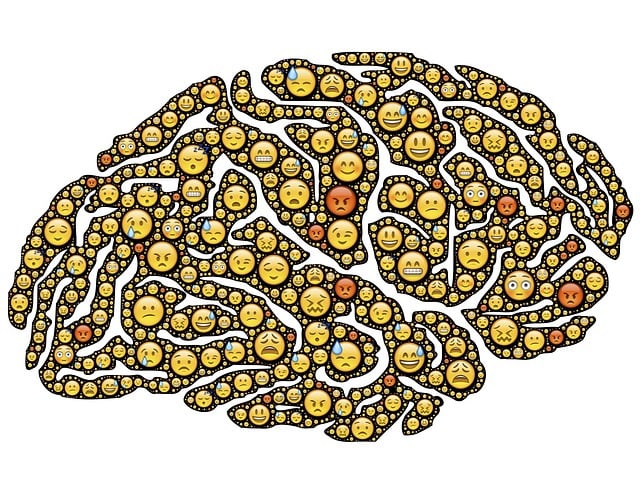Englewood Dissociative Disorder Therapy (EDDT) focuses on comprehensive risk assessment to tailor stress reduction and harm minimization strategies for clients' emotional well-being. By proactively addressing risks, EDDT creates a safe environment using techniques like Mental Wellness Journaling and Mindfulness Meditation to empower patients in their healing journey. This strategic approach integrates resilience-building into personalized treatment plans, ensuring continuous evaluation and adaptability for positive long-term outcomes.
Risk assessment and harm minimization planning are critical components in providing effective therapy for individuals with dissociative disorders, such as those seen in Englewood Dissociative Disorder Therapy. This article delves into these essential aspects, offering a comprehensive guide tailored to the unique challenges presented by this therapeutic context. We explore strategies for understanding risk assessment, developing robust harm minimization plans, and implementing continuous evaluation for optimal patient safety and care.
- Understanding Risk Assessment and Its Role in Dissociative Disorder Therapy
- Developing a Comprehensive Harm Minimization Plan for Englewood Dissociative Disorder Therapy
- Implementation Strategies and Continuous Evaluation for Effective Risk Management
Understanding Risk Assessment and Its Role in Dissociative Disorder Therapy

Englewood Dissociative Disorder Therapy involves a thorough understanding of risk assessment as a foundational step in treatment planning. Risk assessment is a systematic process that identifies potential hazards and predicts their likelihood and impact, guiding therapists in developing strategies to minimize harm. In the context of dissociative disorders, where individuals may experience fragments of memory, identity disruptions, and unpredictable behavioral patterns, assessing risks becomes paramount. This involves evaluating not only immediate dangers but also long-term consequences related to emotional well-being promotion techniques and empathy building strategies.
Therapists play a crucial role in mitigating risks by implementing stress reduction methods tailored to each client’s unique needs. This proactive approach ensures that the therapeutic environment is safe and supportive, fostering trust and encouraging clients to explore their inner experiences without fear of adverse outcomes. Through meticulous risk assessment and harm minimization planning, Englewood Dissociative Disorder Therapy aims to facilitate a comprehensive and effective healing journey.
Developing a Comprehensive Harm Minimization Plan for Englewood Dissociative Disorder Therapy

Developing a comprehensive harm minimization plan is an essential step for any therapy program, particularly when focusing on Englewood Dissociative Disorder Therapy (EDDT). This approach ensures that patients receive tailored support to navigate their unique challenges and promote mental wellness. The plan should incorporate various strategies to enhance emotional well-being, drawing from techniques such as Mental Wellness Journaling Exercise Guidance and Mindfulness Meditation.
By integrating these practices into daily routines, EDDT sessions can be optimized for positive outcomes. Emotional well-being promotion techniques, including self-reflection through journaling and mindfulness exercises, empower patients to develop coping mechanisms. This proactive approach allows them to actively participate in their healing journey, fostering a sense of control and resilience, which is crucial for managing dissociative symptoms.
Implementation Strategies and Continuous Evaluation for Effective Risk Management

Effective risk assessment and harm minimization planning require a strategic approach that includes implementation strategies tailored to specific needs. At Englewood Dissociative Disorder Therapy, we emphasize the importance of personalized interventions. By integrating resilience-building techniques into treatment plans, we empower individuals to navigate challenging situations with enhanced coping mechanisms. This proactive approach not only prevents burnout but also fosters crisis intervention guidance tailored to each client’s unique circumstances.
Continuous evaluation is a cornerstone of our risk management strategy. Regular monitoring allows us to identify emerging risks and adjust interventions promptly. Through dynamic assessment, we ensure that the chosen strategies remain effective, providing a supportive environment for positive change. This iterative process mirrors the journey towards recovery, where flexibility and adaptability are vital components of successful long-term harm minimization.
Risk assessment and harm minimization planning are paramount in providing effective treatment for individuals with dissociative disorders, especially within the context of Englewood Dissociative Disorder Therapy. By thoroughly understanding the potential risks and implementing strategic plans, therapists can ensure a safe and supportive environment. Continuous evaluation is essential to adapt strategies as the client’s needs evolve, ultimately enhancing the therapeutic outcomes for those seeking help in navigating their dissociative experiences.











